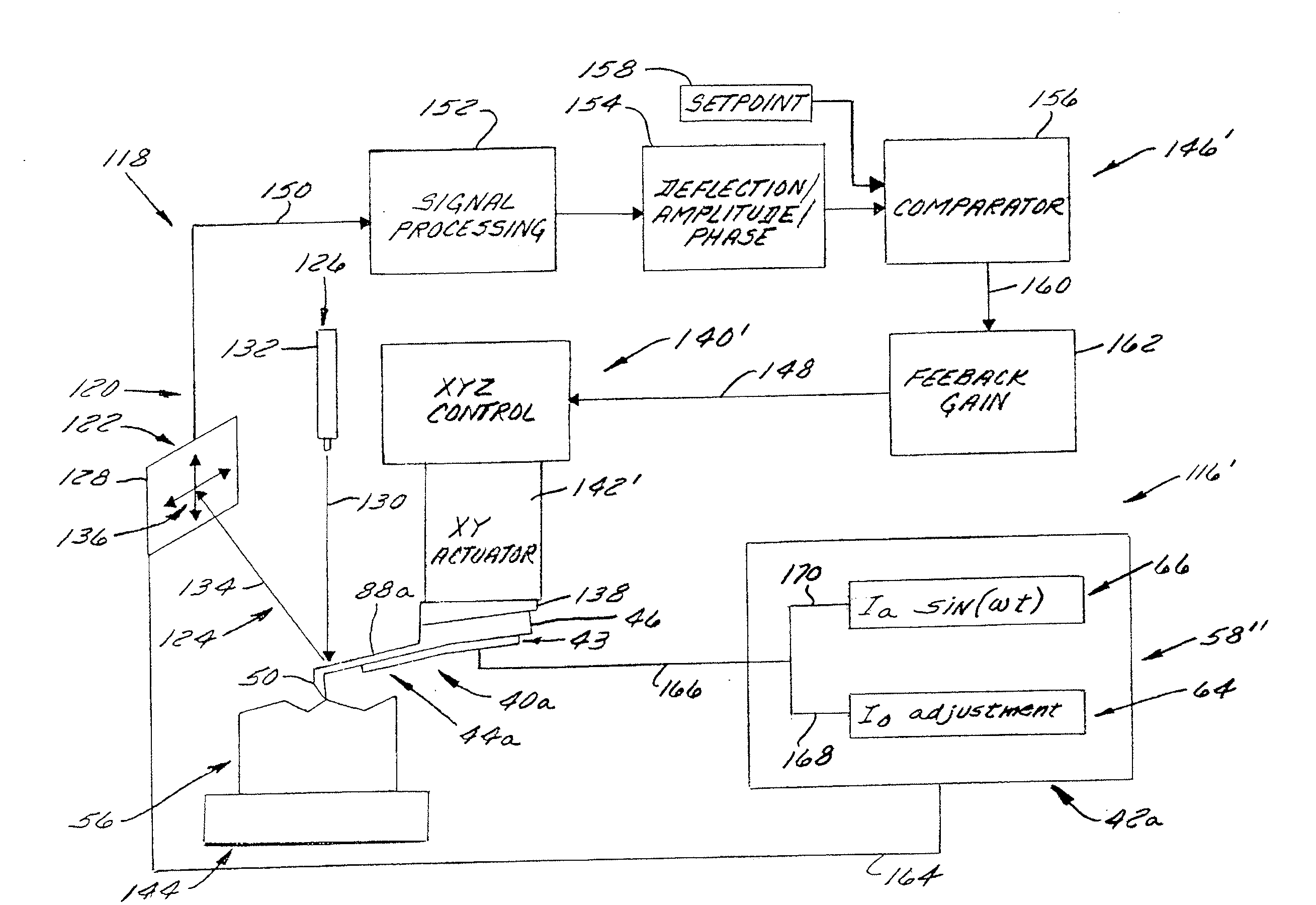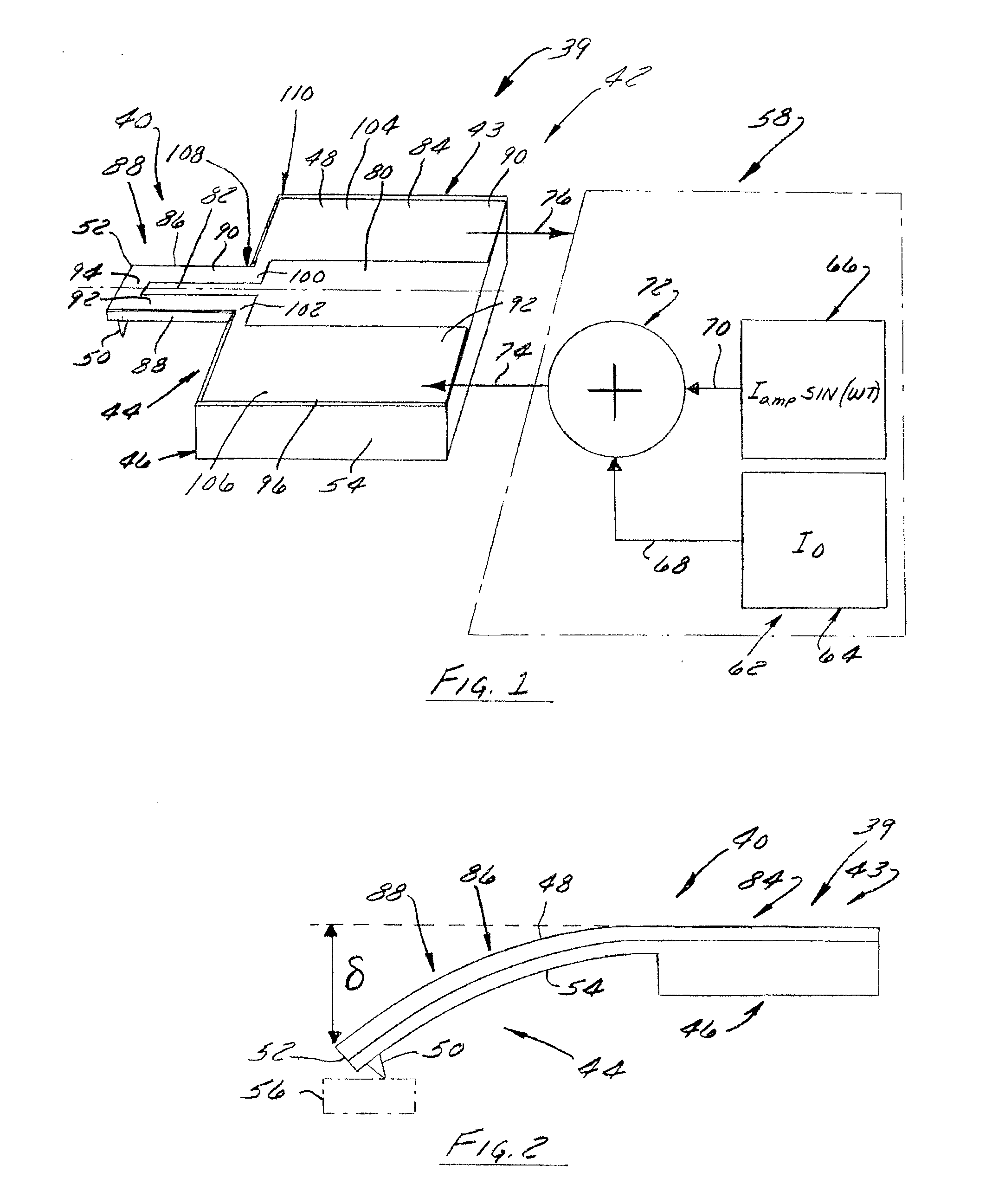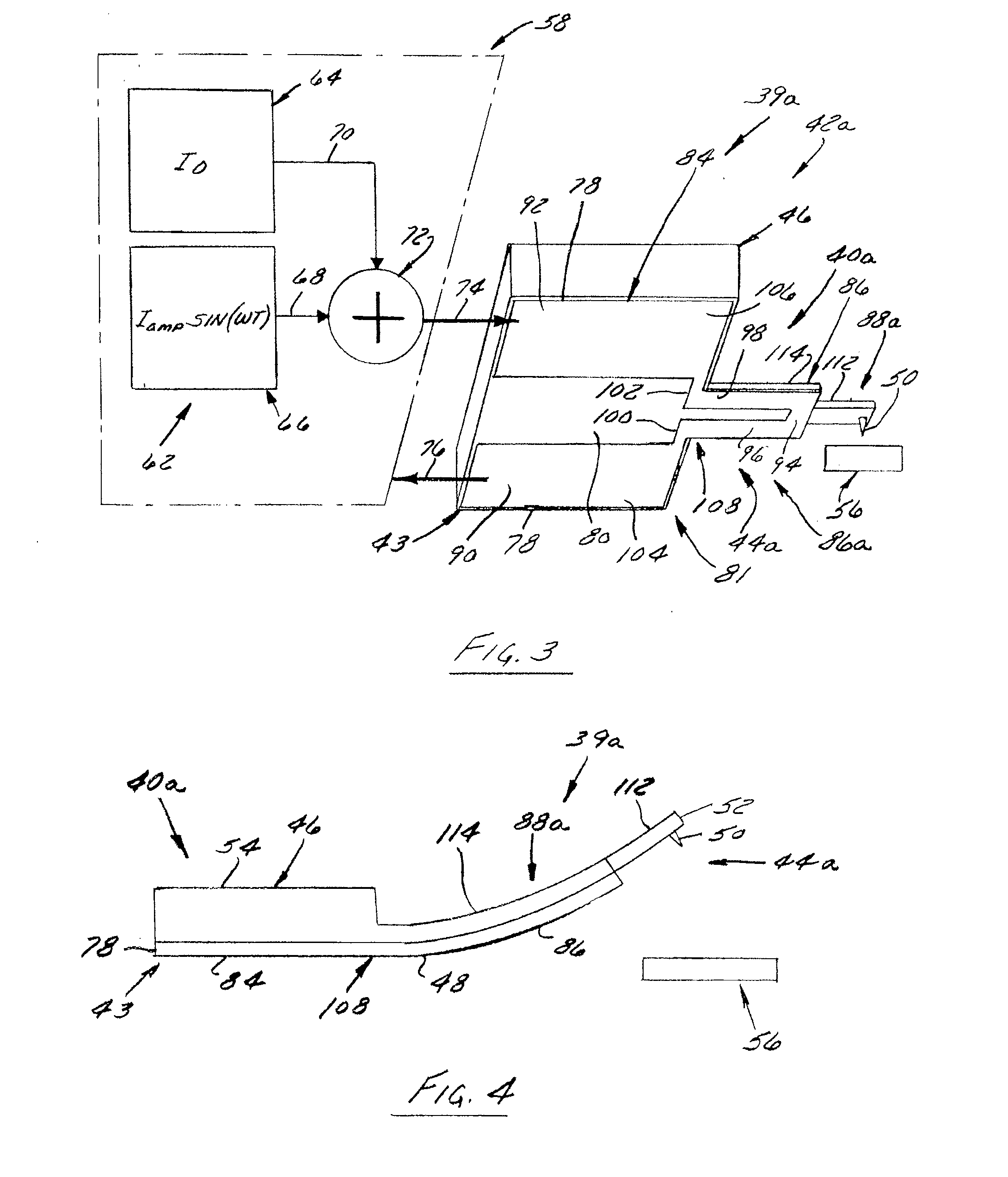Thermal mechanical drive actuator, thermal probe and method of thermally driving a probe
a technology of mechanical drive actuator and probe, which is applied in the direction of mechanical roughness/irregularity measurement, instruments, measurement devices, etc., can solve the problems of inability to achieve the effect of reducing the number of components, inability to manufacture these types of composite cantilevers, and inability to meet the requirements of the application
- Summary
- Abstract
- Description
- Claims
- Application Information
AI Technical Summary
Benefits of technology
Problems solved by technology
Method used
Image
Examples
Embodiment Construction
[0080]FIG. 1 illustrates a preferred and exemplary embodiment of a thermally drivable probe device 39 including a probe 40 and a thermal mechanical drive 42 that is constructed and arranged to facilitate displacement or excitation thereof. The probe 40 includes a cantilever 44 that defines a lever arm or lever 88 extending outwardly from a substrate or base 46 of probe device 39 at its fixed end. The thermal mechanical drive 42 includes a thermal actuator 43 that is disposed in thermally conductive contact with at least a portion of the cantilever 44, such as the lever 88, the substrate 46, or both the lever 88 and substrate 46 (such as depicted in FIG. 1). The thermal actuator 43 preferably is composed of a electrically and thermally conductive material 48 that facilitates thermal energy transfer to, thermal energy transfer from, or thermal energy transfer to and from the cantilever 44. Notably, the components of probe device 39 may be manufactured independently and coupled or as a...
PUM
 Login to View More
Login to View More Abstract
Description
Claims
Application Information
 Login to View More
Login to View More - R&D
- Intellectual Property
- Life Sciences
- Materials
- Tech Scout
- Unparalleled Data Quality
- Higher Quality Content
- 60% Fewer Hallucinations
Browse by: Latest US Patents, China's latest patents, Technical Efficacy Thesaurus, Application Domain, Technology Topic, Popular Technical Reports.
© 2025 PatSnap. All rights reserved.Legal|Privacy policy|Modern Slavery Act Transparency Statement|Sitemap|About US| Contact US: help@patsnap.com



